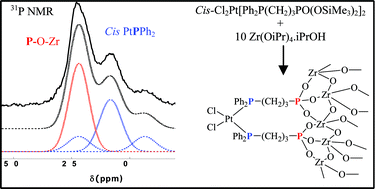Immobilization of platinum(ii) and palladium(ii) complexes on metal oxides by sol–gel processing and surface modification using bifunctional phosphine–phosphonateesters
Abstract
The bifunctional phosphine–phosphonate ester derivatives Ph2P(CH2)3P(O)(OSiMe3)2 (L), (cis-Cl2Pt[Ph2P(CH2)3P(O)(OSiMe3)2]2 (1), trans-Cl2Pd[Ph2P(C6H4)P(O)(OSiMe3)2]2 (2) and trans-Cl2Pd[Ph2P(C6H4)P(O)(OEt)2]2 (3) were used to immobilize platinum(II) and palladium(II) complexes on metal


 Please wait while we load your content...
Please wait while we load your content...